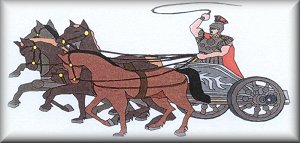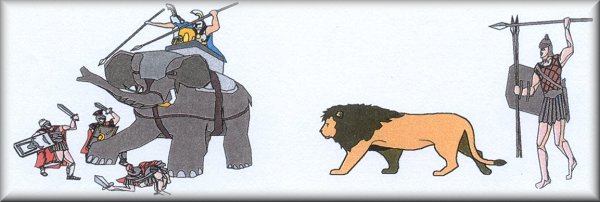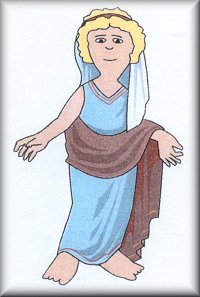
Games and Entertainments for Adults
The oldest ones were ludi circenses. They took place in 'Circus Maximo' or in 'Circus Flaminio', and also in 'Flavio's Amphitheatre' (this place was reserved for the most important performances).
The celebration of 'ludi' was related to the Roman divine service: it was a celebration in the official calendar, the most important 'ludi' were annual and were celebrated on a specific date.
Theatre performances were played together with the circenses only in the most important ludi.
The expenses for the ludi were supplied by public funds, but the magistrates who were in charge of them spent their own money to attract the favour of common people. Therefore, they wasted a great deal of money in the ludi in such a way that many of them were ruined.
The ludi circenses consisted in different spectacles. The most common were ludi gladiatori, in which well-trained gladiators tried to hurt or kill their opponent. The luck of the hurt gladiator depended on the mood of the public. If everybody waved their handkerchiefs, the hurt gladiator saved his life, but if the public stretched their fist with their thum turned down, the defeated gladiator should be killed by the winner or by a servant. Gladiators used to be war prisoners and were trained for that hard job in military quarters by military trainers (lanistae). They fought in the circus in pairs (paria). Often several teams, pairs, of gladiators were fighting at the same time.

Racing carts was another attraction in the circus. The aurigas led the cuadrigas, standing up on the cart and the most skilful became very popular.

The auriga's job was done by people of the lower class but the passion for leading carts in the circus reached the high class too, and Nero, who liked exhibiting himself very much, went down to the circus many times to lead a cart (to do what aurigas did).
Aurigas wore the colours of their sportive teams (factiones) who fought for the prize. The factions were four: the red one (russata), the green one (prasina), the white one (albata) and the deep blue one (indigo veneta). Aurigas wore a metal helmet on their heads and they wore a short, tight tunic tightened with a band. The signal for starting was done by the magistrate who had organised the games and it consisted in shaking a starched handkerchief. Each race was composed of a number of rounds. The most difficult part of the race was turning at the winning post (a stone cone with a long base and a round end). Each team had their supporters.
In the venations in the circus, wild animals were hunted; tigers, panthers, hungry lions taken from subterranean caves, were run through after a long and dangerous fight by the armed gladiator.

The ludi scaenici were the noblest part of the ludi. Lower people preferred the amphitheatre to the theatre. The theatre had a secular characteristic in Rome. This characteristic explains the slight social consideration that Roman people had with reference to authors and actors, who were in general slaves or libertos.
The audience was admitted to the ordinary seats in the circus and theatre, but there were reserved an honour setas as well. The authorities sat in the front rows of the orchestra, the fourteen following rows were reserved to gentlemen. Strangers and slaves weren't allowed to the shows.
The shows lasted many hours, so people used to carry food and drinks with them. Those who took care of the shows were in charge of delivering food, drinks and sweets (bellaria). People came since the night before the shows and they would sit in the rows assigned to them.
Theatre shows were played during the day, and it happened the same with circenses shows although sometimes, to do them more attractive, they were performed at night, lighted by means of torches.
The theatre and circus shows were also places for meeting. People gathered closely in the last rows, but in the reserved seats, where authorities and noble families would enjoy the performance, the most selected people in Rome met as if they were sitting in a big lounge. Noble women made use of the opportunity to wear smart dresses, hairdos and also jewels.
